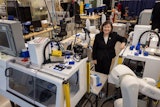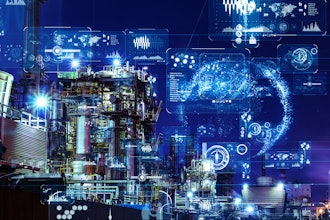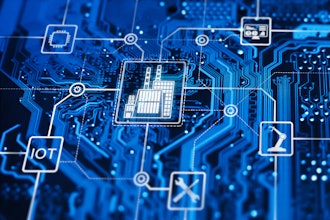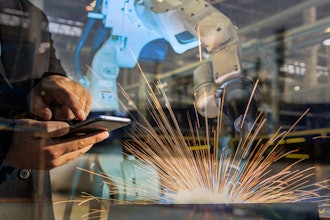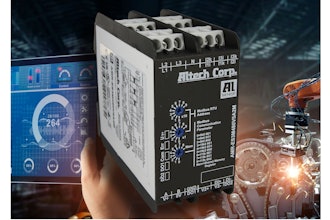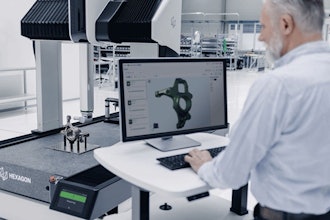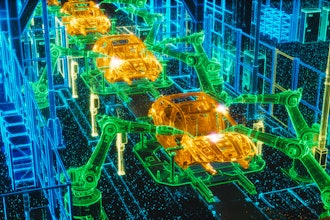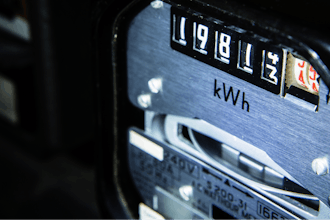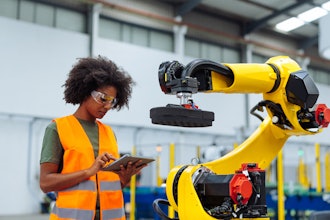If you think of 3D printing as cool technology that’s only practical for one thing — prototyping — think again. 3D printing is finally on a path toward reaching its full potential.
The signs are all around us. For example, BMW recently announced plans to use 3D printing systems to produce serial and custom parts for its vehicles. Its Rolls-Royce Phantom reportedly features 10,000 additively manufactured parts, signifying the automakers overall confidence in the technology. Johnson & Johnson, meantime, announced plans to use 3D printing to personalize instrumentation and software for patient-specific healthcare devices. The technology is expected to bring innovation in a variety of related areas, including orthopedics, eye health and consumer products. And Siemens PLM Software has announced it is working on solutions to transform additive manufacturing (AM) from a prototyping tool into more of a full production system.
These are just a few early glimpses into what should be apparent by now: 3D printing is coming of age and beginning to disrupt the $12 trillion manufacturing industry.
According to The Wohlers Report 2016, the compound annual growth of 3D printing for all applications was 25.9 percent worldwide in 2015. Further, final part production grew from 42.6 percent of the total 3D printing business in 2014 to 51.3 percent in 2015. This segment includes all parts related to production applications, including final parts for end-use, patterns, molds, dies, jigs and fixtures.
So why now? After all, 3D printing has been around a while, and some say it hasn’t completely lived up to its promise or full potential. Right?
Historically, that may have been partly true. But new systems have recently been released to change all of that. These systems are capable of producing superior quality physical parts faster and less expensive than earlier 3D printers. Suddenly, 3D printing seems much more attractive for producing both prototypes and finished goods, especially customized or replacement parts that manufacturers wouldn’t necessarily want to mass produce. In fact, Gartner projects that by 2019, 10 percent of out-of-production spare parts for cars, trucks, bicycles and motorcycles, in addition to military vehicles and drones, will be 3D-printed.
Beyond the financial motivation of embracing 3D printing for prototyping and parts production, some logistical and environmental benefits are also coming into play. More than 70 percent of the world’s population is expected to move to urban centers by 2050, and economic activity is sure to follow. This unprecedented human migration will put tremendous pressure on urban infrastructure and the environment. The world will have to adapt to this reality because current transport systems for shipping global freight simply won’t be able to move parts and products into such centers of density.
3D printing, on the other hand, enables manufacturing to get closer to the customer. Rather than transporting parts and finished goods around the world, manufacturers can send perfect digital files to 3D printers in locations of their choice. It doesn’t matter if the final destination is in the deepest part of an industrialized mega-city in India or in a remote South American village. If a 3D printer is stationed there, almost anything is possible. Companies will ship digital designs and raw materials. Nothing else.
By doing things in this manner, manufacturers lessen the need to maintain physical inventories of products and parts, gradually shortening and simplifying the global supply chain and freeing up money and factory space. Suddenly, the dream of true, just-in-time delivery model becomes more feasible.
Of course, another fringe benefit of this shipping approach is that it is much more environmentally friendly than traditional methods. For one thing, manufacturers don’t burn as much fossil fuel shipping products, which could result in a 5 percent decrease in energy and C02 emissions by 2020. Additionally, even the most complex parts can be made using only the essential amount of material, and that material could be partially composed of renewable and recyclable feedstock.
For all of these reasons, 3D printing is showing more promise than ever before, which is why manufacturers and industry watchers are increasingly taking notice. But the path to a true industrial revolution isn’t without its hurdles.
The biggest challenge facing 3D printers today is that most of them can only print with one material. In order to scale — and completely move from prototype to finished products — systems will need to be able to use diverse materials, and even more, use different material properties at one time (similar to inkjet printers that use multiple colors). Advances are being made on this but capabilities could still be five to 10 years away.
Another key hurdle is the need for major industry players to come together and clear a path for more widespread adoption of 3D printing in manufacturing. There are signs an ecosystem is starting to develop. HP, for example, recently announced it is collaborating on 3D printing with a wide range of leading manufacturers and co-development partners. As the company scales its production, it anticipates wider adoption by service bureaus and manufacturers, especially those in aerospace, automotive, consumer packaged goods and the medical industries. A number of industry groups have also started to emerge, such as The Digital Manufacturing and Design Innovation Institute (DDII), a federally-funded research and development organization of UI LABS. They are experimenting with how to incorporate 3D printing into the overall manufacturing process.
Hurdles aside, 3D printing is gaining momentum. It is about to drive a seismic shift in manufacturing. Maybe even an industrial revolution. It is clearly changing how manufacturers think about their businesses, the environment and the world around them. And while nobody can say for sure when it will be an integral part of manufacturing, one thing is certain: it’s no longer just a cool way of pro-typing. 3D manufacturing is about to get very real and will soon have its day in the sun as a hero.
Ramon Pastor is the vice president and general manager of HP’s 3D Printing business.
